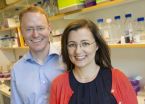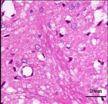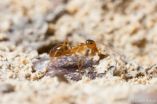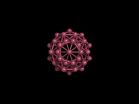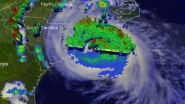(Press-News.org) Researchers at Karolinska Institutet in Sweden have headed a study that provides new knowledge about the EphA2 receptor, which is significant in several forms of cancer. This is important knowledge in itself – but just as important is how this study, which is published in the highly respected journal Nature Methods, was conducted. The researchers used the method of DNA origami, in which a DNA molecule is shaped into a nanostructure, and used these structures to test theories about cell signalling.
It was previously known that the EphA2 receptor played a part in several forms of cancer, such as breast cancer. The ligand, i.e., the protein that communicates with the receptor, is known as an ephrin molecule. Researchers have had a hypothesis that the distance between different ligands – in this case the distance between ephrin molecules – affects the level of activity in the communicating receptor of the adjacent cells.
The Swedish researchers set out to test this hypothesis. They used DNA building blocks to form a stable rod. This has then been used as a very accurate measure of the distance between molecules.
"We use DNA as the construction material for a tool that we can experiment with", says Björn Högberg, principal investigator at the Department of Neuroscience. "The genetic code of the DNA in these structures is less important in this case."
The researchers attached proteins, or ephrins, to the DNA rod at various intervals, for example 40 or 100 nanometres apart. The DNA rods were then placed in a solution containing breast cancer cells. In the next step, the researchers looked at how active EphA2 was in these cancer cells.
It turned out that if the ephrin molecules were placed close together on the DNA rod, the receptor in question became more active in the cancer cells, and the cells also became less invasive in respect of the surrounding cells, which could be an indication that they became less prone to metastasis. This was true even though the amount of protein was the same throughout the experiments, i.e., the number of attached molecules remained the same.
"For the very first time, we have been able to prove this hypothesis: the activity of EphA2 is influenced by how closely spaced the ligands are on the surrounding cells", says Björn Högberg. "This is an important result in itself, but the point of our study is also that we have developed a method for examining how cells react to nearby cells in a controlled environment, using our custom DNA nano-calipers."
The researchers describe the cell communication as a form of Braille, where the cells somehow sense the protein patterns of nearby cells, and where the important thing is not only the amount of proteins, but to a great extent the distance between them as well. This study found that a cluster of proteins would communicate more actively than sparsely spaced proteins, even if the concentration was the same.
"This is a model that can help us learn more about the importance of the spatial organization of proteins in the cell membrane to how cells communicate with each other, something that will hopefully pave the way for a brand new approach to pharmaceuticals in the long term", says Ana Teixeira, a principal investigator at the Department of Cell and Molecular Biology. "Today, the function of the pharmaceuticals is often to completely block proteins or receptors, but it is possible that we should rather look at the proteins in their biological context, where the clustering and placement of various proteins are relevant factors for the effect of a drug. This is probably an area where there is important knowledge to obtain, and this is a way of doing it."
INFORMATION:
The study is financed by funds from the Swedish Research Council, the Strategic Research Program in Stem Cell Research and Regenerative Medicine (StratRegen) at Karolinska Institutet, Vinnova, Carl Bennet AB.
Publication: 'Spatial Control of Membrane Receptor Function using Ligand Nano–Calipers', Alan Shaw, Vanessa Lundin, Ekaterina Petrova, Ferenc Fördős, Erik Benson, Abdullah Al–Amin, Anna Herland, Andries Blokzijl, Björn Högberg och Ana I. Teixeira, Nature Methods, online July 6, 2014; doi: 10.1038/nmeth.3025.
DNA origami nano-tool provides important clue to cancer
2014-07-07
ELSE PRESS RELEASES FROM THIS DATE:
Dental pulp stem cells promote the survival and regeneration of retinal cells after injury
2014-07-07
Researchers at the University of Birmingham, UK, led by Dr. Ben Scheven, Dr. Wendy Leadbeater and Ben Mead have discovered that stem cells isolated from the teeth, termed dental pulp stem cells (DPSC), can protect retinal ganglion cells (RGCs) from death following injury and promote regeneration of their axons along the optic nerve.
RGC loss is the leading cause of blindness and can arise through traumatic injury or degenerative diseases such as glaucoma. Neurotrophic factors (NTFs), which travel along the axon of a neuron to a cell body act as survival signals however, ...
Houshiheisan maintains stabilization of the internal environment of neurovascular units
2014-07-07
Cerebral ischemia not only injuries neurons, but also involves the glial cells that provide a supportive scaffold to which the neurons are attached and the microvessels that provide energy for nervous tissue. Therefore, protection of a single neuron is not sufficient to recover nervous function, and more attention should be paid to maintenance of the function of entire neurovascular units. Houshiheisan compound is one of effective traditional Chinese compound prescriptions for stroke. The prescription is composed of wind-dispelling (chrysanthemun flower, divaricate saposhnikovia ...
Ultra-cold atom transport made simple
2014-07-07
Techniques for controlling ultra-cold atoms travelling in ring traps currently represent an important research area in physics. A new study gives a proof of principle, confirmed by numerical simulations, of the applicability to ultra-cold atoms of a very efficient and robust transport technique called spatial adiabatic passage (SAP). Yu Loiko from the University of Barcelona, Spain, and colleagues have, for the first time, applied SAP to inject, extract, and filter the velocity of neutral atoms from and into a ring trap. Such traps are key to improving our understanding ...
Science and cookies: Researchers tap into citizen science to shed light on ant diversity
2014-07-07
Scientists from North Carolina State University and the University of Florida have combined cookies, citizen science and robust research methods to track the diversity of ant species across the United States, and are now collaborating with international partners to get a global perspective on how ants are moving and surviving in the modern world.
"We think our School of Ants project serves as a good model for how citizen science can be used to collect more data, more quickly, from more places than a research team could do otherwise," says Dr. Andrea Lucky, a researcher ...
Concern at lack of teenage patients in cancer trials
2014-07-07
Age limits on clinical trials need to be more flexible to allow more teenage cancer patients the chance to access new treatments, according to a report from the National Cancer Research Institute (NCRI), published in the Lancet Oncology.
The study, funded by the National Institute for Health Research and Teenage Cancer Trust, found that trials designed with broader age limits resulted in more teenagers and young adults going on clinical trials.
The study showed this recommendation led to a 13 per cent rise in 15-19 year old cancer patients taking part in clinical trials ...
Sutures or staples? The best choice for closing a C-section
2014-07-07
(PHILADELPHIA) -- In the largest study to date comparing sutures (stitches) versus surgical staples for closing a C-section, researchers found a 57 percent decrease in wound complications in women who were sutured versus those who received staples. By carefully addressing the concerns that previous studies had raised, the research shows a clear benefit of suture for women.
"There has been ongoing debate in the field about the use of sutures versus staples," says senior author Vincenzo Berghella, M.D., director of Maternal Fetal Medicine in the Department of Obstetrics ...
Low-cost TB test means quicker, more reliable diagnosis for patients
2014-07-07
(BRYAN, Texas) — A new test for tuberculosis (TB) could dramatically improve the speed and accuracy of diagnosis for one of the world's deadliest diseases, enabling health care providers to report results to patients within minutes, according to a study published this week in the journal Angewandte Chemie.
Jeffrey Cirillo, Ph.D., professor at the Texas A&M Health Science Center College of Medicine, in collaboration with GBDbio, a Texas A&M spinoff company, and investigators at Stanford University, have identified a new chemical compound to spot the bacteria that cause ...
Platonic solids generate their 4-dimensional analogues
2014-07-07
Alicia Boole Stott, the third daughter of mathematician George Boole, is probably best known for establishing the term "polytope" for a convex solid in four dimensions. Alicia was also a long time collaborator of HSM Coxeter, one of the greatest geometers of the 20th Century.
Platonic solids are regular bodies in three dimensions, such as the cube and icosahedron, and have been known for millennia. They feature prominently in the natural world wherever geometry and symmetry are important, for instance in lattices and quasi-crystals, as well as fullerenes and viruses (see ...
Scientists find important piece in the brain tumor puzzle
2014-07-07
This news release is available in French. Scientists at the Montreal Neurological Institute and Hospital, McGill University and McGill University Health Centre have shown that a member of the protein family known as SUMO (small ubiquitin-like modifier) is a key to why tumour cells multiply uncontrollably, especially in the case of glioblastoma. The SUMO family proteins modify other proteins and the SUMOylation of proteins are critical for many cellular processes. Identifying SUMO's role in the cancer cell growth will lead to a new strategy for glioblastoma treatment. ...
NASA sees Hurricane Arthur's July fourth fireworks on US East Coast
2014-07-07
VIDEO:
On July 3, NASA's TRMM satellite passed over Arthur and saw intense bands of thunderstorms north of Arthur's well defined eye dropping rainfall at a rate of over 98.4 mm...
Click here for more information.
Hurricane Arthur made landfall in North Carolina on July 3, and today, July 4, it is bringing its own fireworks along the Mid-Atlantic and New England states. Those fireworks were in the form of "hot towers," powerful, high thunderstorms with heavy rainfall that indicate ...
